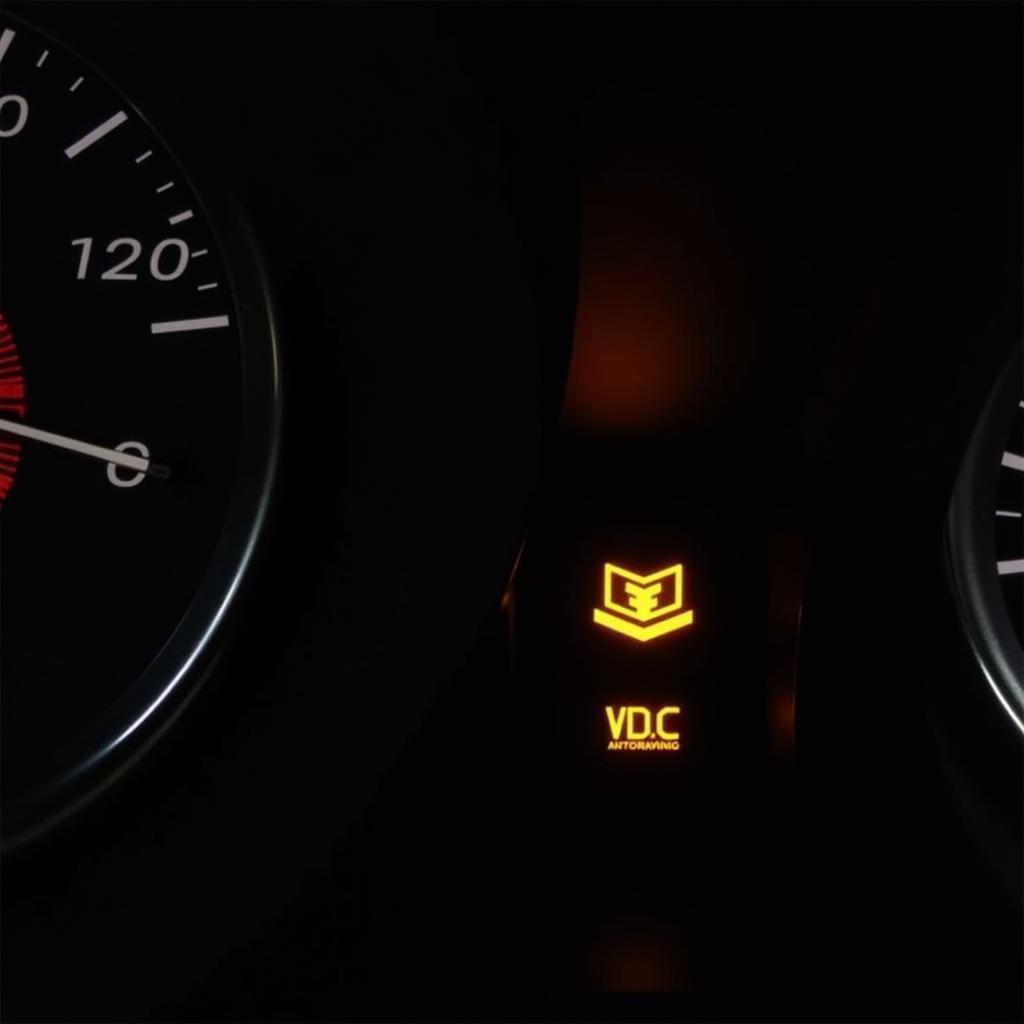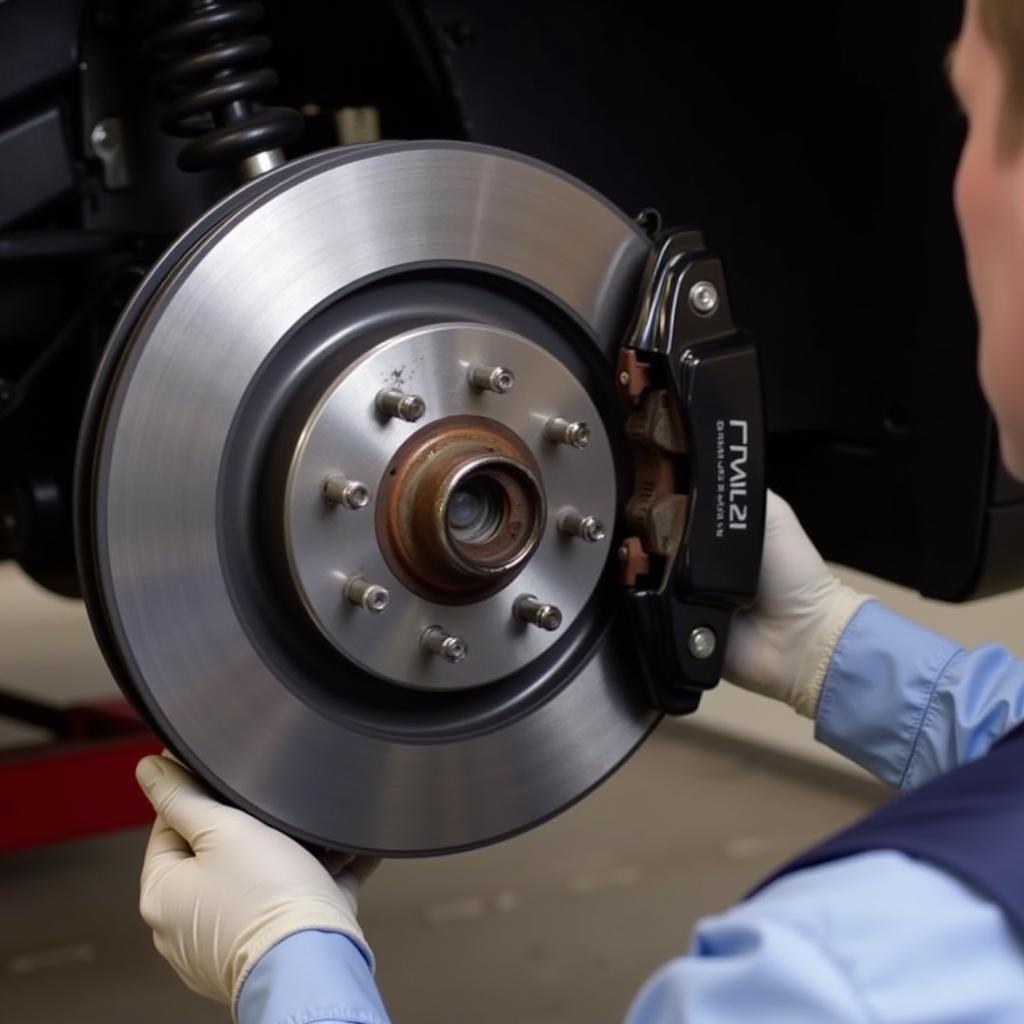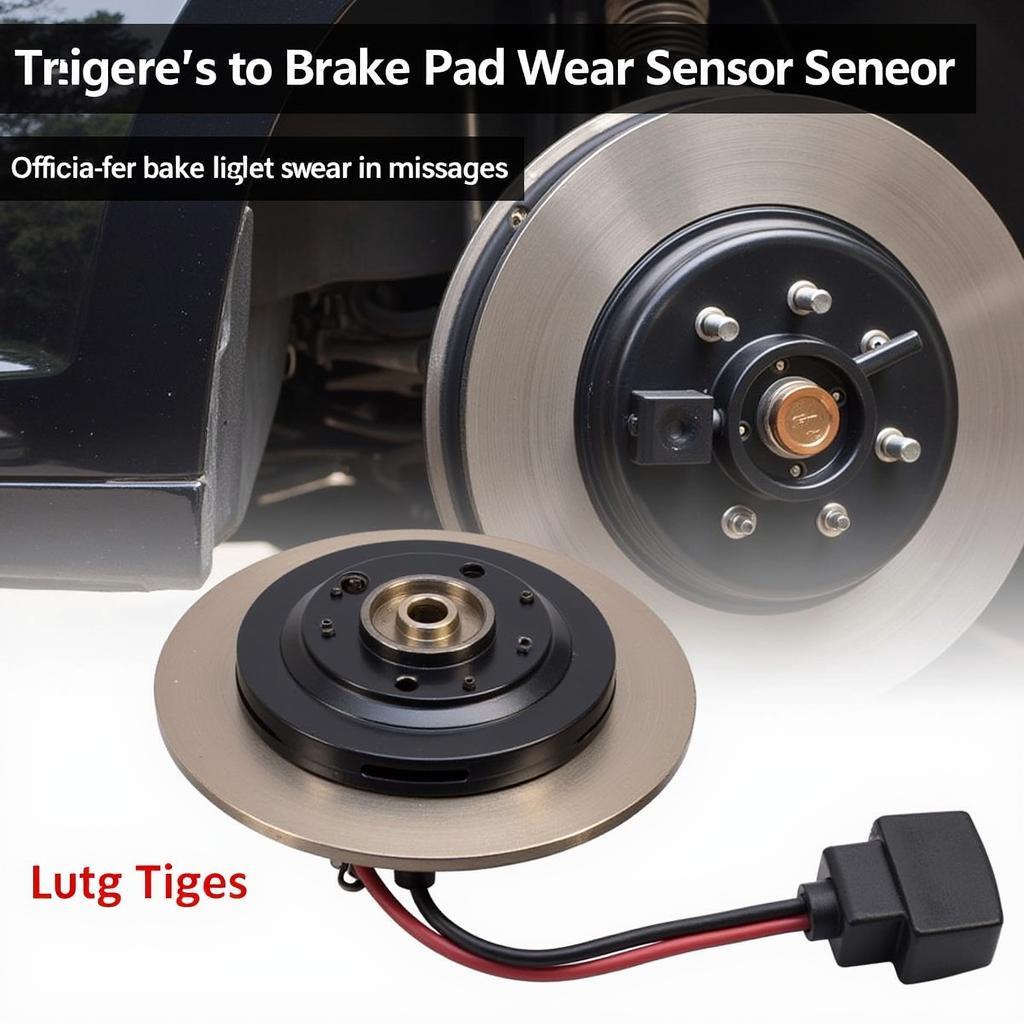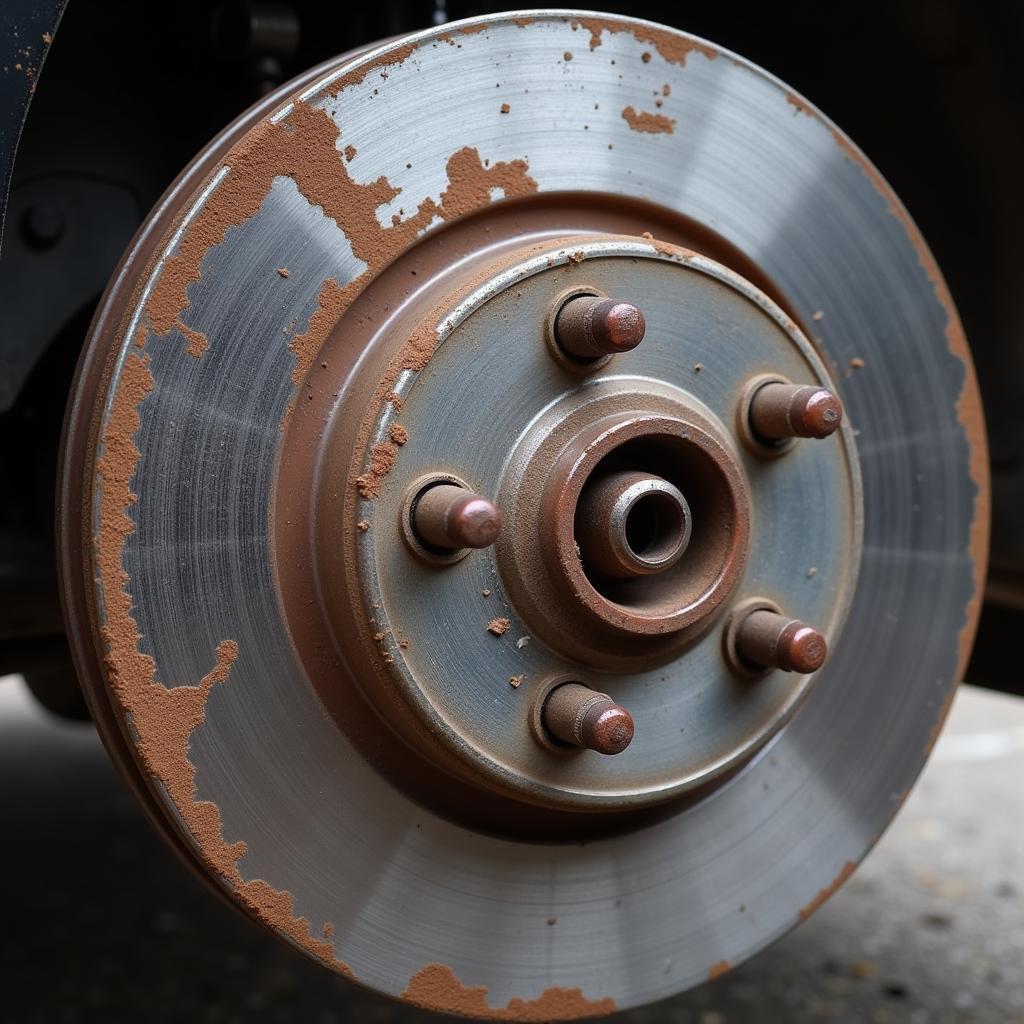The 2010 Infiniti QX56, known for its luxurious ride and powerful engine, can occasionally throw a curveball in the form of an illuminated warning light. Among these, the brake slip light can be particularly alarming. Seeing this light flash on your dashboard can be unsettling, but understanding its meaning and potential causes can empower you to address the issue effectively.
This comprehensive guide will delve into the intricacies of the 2010 Infiniti QX56 brake slip light, equipping you with the knowledge to diagnose and resolve the problem, potentially saving you time, money, and unnecessary stress.
What Does the Brake Slip Light Mean on a 2010 Infiniti QX56?
The brake slip light, often accompanied by the Vehicle Dynamic Control (VDC) warning light, indicates a problem with your SUV’s traction control system. When activated, it signals that the system is actively intervening to prevent wheel slippage and maintain vehicle stability.
 2010 Infiniti QX56 Brake Slip Light Dashboard
2010 Infiniti QX56 Brake Slip Light Dashboard
Common Causes of the Brake Slip Light
Several factors can trigger the brake slip light in your 2010 Infiniti QX56. Some of the most prevalent culprits include:
-
Slippery Road Conditions: The most common reason for the light to illuminate is driving on slippery surfaces such as ice, snow, or wet pavement. In these situations, the system activates to prevent wheelspin and maintain control.
-
Aggressive Driving: Sudden acceleration, hard braking, or sharp turns can also trigger the system, even on dry roads.
-
Faulty Wheel Speed Sensors: The system relies on wheel speed sensors to detect slippage. If a sensor malfunctions or gets covered in dirt or debris, it can send inaccurate readings, leading to false activation.
-
Worn Brake Pads: While not directly related to the traction control system, worn brake pads can reduce braking effectiveness, potentially leading to slippage and triggering the warning light.
-
Low Tire Pressure or Uneven Tire Wear: Incorrect tire pressure or uneven wear can affect the vehicle’s handling and grip, increasing the likelihood of slippage.
-
Steering Angle Sensor Issues: The steering angle sensor helps the system determine the intended direction of travel. A malfunctioning sensor can disrupt this communication, causing the system to misinterpret driving conditions.
Diagnosing the Problem: What to Do When the Brake Slip Light Comes On
While a momentary flicker of the brake slip light during challenging driving conditions might not be a cause for concern, a persistent illumination warrants attention. Here’s a step-by-step guide to help you diagnose the issue:
-
Check for Obvious Factors: Begin by assessing the driving conditions. Are you on a slippery surface? Have you been driving aggressively? If so, adjusting your driving style may be sufficient.
-
Inspect Tire Pressure and Tread: Ensure all tires are inflated to the recommended pressure and check for signs of uneven wear or damage.
-
Inspect Brake Pads: Visually examine your brake pads for wear. If they appear thin or close to the wear indicators, it’s time for a replacement.
 Mechanic Checking Brake Pads on a 2010 Infiniti QX56
Mechanic Checking Brake Pads on a 2010 Infiniti QX56
-
Utilize OBD-II Scanner: If the light remains illuminated despite addressing basic factors, connect an OBD-II scanner to your vehicle’s diagnostic port. This tool can read trouble codes stored in the vehicle’s computer, providing valuable insights into the root cause of the problem.
-
Seek Professional Help: If you’re unable to identify the issue or if the problem persists, it’s best to consult a qualified mechanic specializing in Infiniti vehicles. They have the expertise and specialized equipment to diagnose and repair complex electronic systems like the traction control system.
Remote Diagnostics and Programming: A Modern Solution for Modern Vehicles
In today’s technologically advanced world, remote diagnostics and programming offer a convenient and efficient way to address vehicle issues, including those related to warning lights like the brake slip light.
“Remote diagnostics allows us to access the vehicle’s computer system remotely,” explains John Miller, a certified automotive technician with over 15 years of experience working on Infiniti vehicles. “This enables us to read trouble codes, analyze sensor data, and even program certain modules without the vehicle being physically present in the shop.”
This technology can be particularly beneficial for diagnosing intermittent issues that are difficult to replicate in a shop environment.
Preventing Future Issues: Tips for Maintaining Optimal Brake System Health
Preventing brake slip light issues often goes hand-in-hand with maintaining your 2010 Infiniti QX56’s overall brake system health.
- Regular Brake Inspections: Adhere to the manufacturer’s recommended maintenance schedule for brake inspections.
- Quality Brake Pads and Rotors: Invest in high-quality brake pads and rotors to ensure optimal braking performance and longevity.
- Brake Fluid Flush: Have your brake fluid flushed and replaced according to the recommended intervals to prevent corrosion and maintain system efficiency.
- Avoid Riding the Brakes: Prolonged braking, especially on downhill descents, can generate excessive heat, leading to premature wear and potential brake fade.
 Close-up of Brake System Inspection on a 2010 Infiniti QX56
Close-up of Brake System Inspection on a 2010 Infiniti QX56
Conclusion
The brake slip light on your 2010 Infiniti QX56 serves as a crucial indicator of your vehicle’s traction control system. Understanding its meaning and potential causes can empower you to address the issue effectively. By following the steps outlined in this guide and prioritizing regular maintenance, you can ensure a safer and more enjoyable driving experience while keeping your Infiniti QX56 performing at its best.


